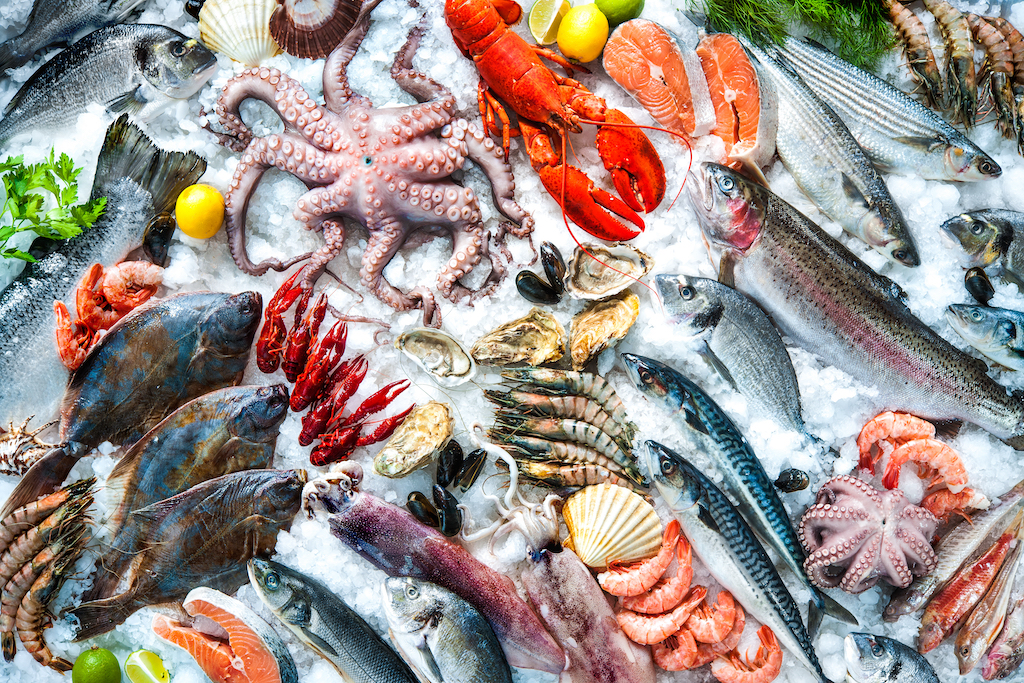As a result of aquatic meals are so nutrient wealthy, public well being specialists have innovated strategies to create processed fish merchandise developed from rising applied sciences; examples embody fish powders for infants, fish wafers as a snack, and fish chutneys. [1]
This web page will focus totally on animal sources of aquatic meals relatively than plant sources.
Supply Of

See the full graphic comparing aquatic to land-based animal-sourced foods
Aquatic Meals and Well being
Sure aquatic animal meals are a serious dietary supply of two polyunsaturated omega-3 fatty acids (PUFAs)—docosahexaenoic acid (DHA) and eicosapentaenoic acid (EPA). These fatty acids are initially produced by sure sorts of algae, that are then eaten by aquatic animals in order that the fat accumulate of their tissues or organs. Omega-3s are present in all aquatic meals, however significantly within the fatty tissue of oily fish like salmon and mackerel, the liver of lean white fish like cod and halibut, and the blubber or thick layer of fats below the pores and skin of marine animals like seals and whales. Smaller quantities are additionally present in crustaceans, bivalves, and cephalopods. [3] Dietary supplements of fish oil, algal oil, and krill oil additionally comprise DHA and/or EPA. A lot of the analysis on aquatic meals and human well being focuses on these omega-3s.
Comments
0 comments
